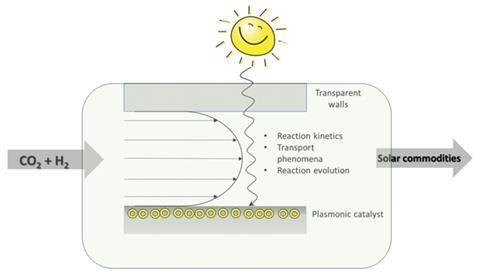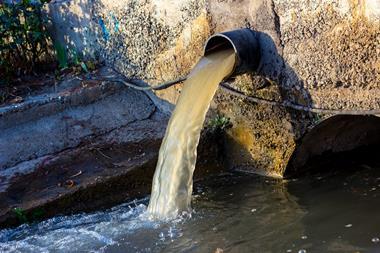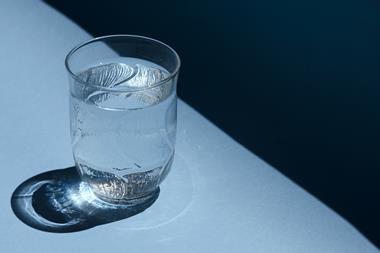New approach to reverse water–gas shift reaction combines catalyst and reactor in one device
Collaborators in Spain and Germany have built a microreactor that uses visible light to drive a reaction that turns carbon dioxide into carbon monoxide – an important chemical building block.

The reverse water–gas shift (RWGS) reaction converts carbon dioxide and hydrogen into carbon monoxide and water and is often performed at high temperatures over a copper catalyst. Scientists around the world are working to design more efficient catalysts so that the RWGS reaction can proceed at lower temperatures but many of these can’t be used in industry due to the poor transition from lab to reactor. Now, Alexander Navarrete, from the University of Valladolid in Spain, has taken on this challenge by combining the catalyst and the reactor in one small device.
Navarrete designed and built a microreactor with help from scientists at the Karlsruhe Institute for Technology in Germany; a collaboration that Navarrete says ‘was critical to overcome the challenge.’ Together, they mixed a Cu/ZnO plasmon catalyst with silica and impregnated glass microchannels with this new composite. Carbon dioxide and hydrogen could flow through the narrow tubes, react over the catalyst and the products could be collected at the end of the tube. An advantage of the plasmonic catalyst is that it can be designed to absorb at specific wavelengths of light. Absorbing in the visible range allows photothermal energy to replace the thermal energy necessary for the RWGS reaction so it can run at 50°C instead of 1000°C. This transparent ‘plasmonic reactor’ concept allows three important elements in the same device: light absorption, catalyst interaction and product transportation. The device can also be easily scaled up for mass production.
Alexander Cowan, a photocatalysis expert from the University of Liverpool in the UK, says that this is a great idea with a simple approach: ‘Lowering the thermal requirements in the RWGS is an important concept but future work is needed to solve the mechanism of action and determine the contribution of the light.’ Navarrete agrees: ‘This is a proof of concept. We need in situ analysis to determine the individual heat and temperatures of the nanoparticles and to identify any intermediates formed. We are presently designing a new set of reactions to explore the limits of the system, and the influence of several process variables. This is a novel concept and there is still a lot of room for improvement and exploration.’
Currently, the device works at 50°C but most industrial RWGS reactions are at 250–1000°C: ‘If we can reach that level we can be very competitive with industrial catalysts,’ adds Navarrete.
References
This article is free to access until 26 November 2015
A Navarrete et al, Faraday Discuss., 2015, DOI: 10.1039/c5fd00109a












No comments yet